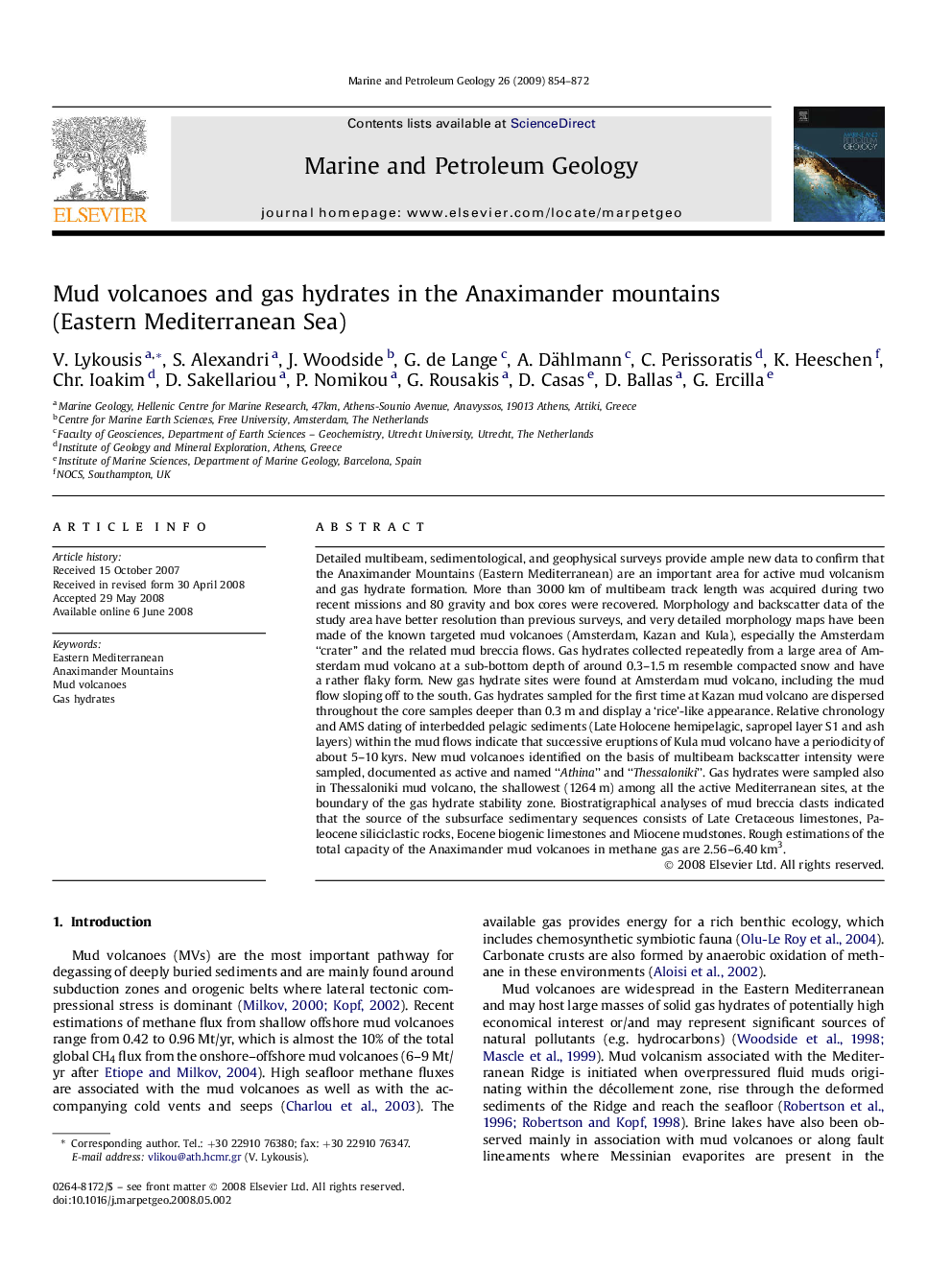| کد مقاله | کد نشریه | سال انتشار | مقاله انگلیسی | نسخه تمام متن |
|---|---|---|---|---|
| 4696616 | 1351692 | 2009 | 19 صفحه PDF | دانلود رایگان |

Detailed multibeam, sedimentological, and geophysical surveys provide ample new data to confirm that the Anaximander Mountains (Eastern Mediterranean) are an important area for active mud volcanism and gas hydrate formation. More than 3000 km of multibeam track length was acquired during two recent missions and 80 gravity and box cores were recovered. Morphology and backscatter data of the study area have better resolution than previous surveys, and very detailed morphology maps have been made of the known targeted mud volcanoes (Amsterdam, Kazan and Kula), especially the Amsterdam “crater” and the related mud breccia flows. Gas hydrates collected repeatedly from a large area of Amsterdam mud volcano at a sub-bottom depth of around 0.3–1.5 m resemble compacted snow and have a rather flaky form. New gas hydrate sites were found at Amsterdam mud volcano, including the mud flow sloping off to the south. Gas hydrates sampled for the first time at Kazan mud volcano are dispersed throughout the core samples deeper than 0.3 m and display a ‘rice’-like appearance. Relative chronology and AMS dating of interbedded pelagic sediments (Late Holocene hemipelagic, sapropel layer S1 and ash layers) within the mud flows indicate that successive eruptions of Kula mud volcano have a periodicity of about 5–10 kyrs. New mud volcanoes identified on the basis of multibeam backscatter intensity were sampled, documented as active and named “Athina” and “Thessaloniki”. Gas hydrates were sampled also in Thessaloniki mud volcano, the shallowest (1264 m) among all the active Mediterranean sites, at the boundary of the gas hydrate stability zone. Biostratigraphical analyses of mud breccia clasts indicated that the source of the subsurface sedimentary sequences consists of Late Cretaceous limestones, Paleocene siliciclastic rocks, Eocene biogenic limestones and Miocene mudstones. Rough estimations of the total capacity of the Anaximander mud volcanoes in methane gas are 2.56–6.40 km3.
Journal: Marine and Petroleum Geology - Volume 26, Issue 6, June 2009, Pages 854–872